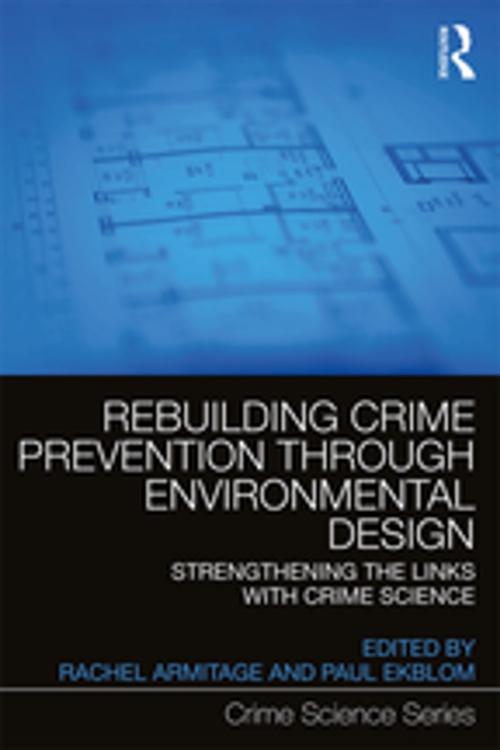Rebuilding Crime Prevention Through Environmental Design
Strengthening the Links with Crime Science
Nonfiction, Social & Cultural Studies, Social Science, Crimes & Criminals, Criminology| Author: | ISBN: | 9781317419143 | |
| Publisher: | Taylor and Francis | Publication: | February 11, 2019 |
| Imprint: | Routledge | Language: | English |
| Author: | |
| ISBN: | 9781317419143 |
| Publisher: | Taylor and Francis |
| Publication: | February 11, 2019 |
| Imprint: | Routledge |
| Language: | English |
Crime Prevention Through Environmental Design (CPTED) is a practice-oriented approach to reduce the risk of offences such as burglary and fear of crime by modifying the built environment. In recent years, this approach has been criticised for duplicating terminology and for failing to integrate successfully with other approaches.
Rebuilding Crime Prevention Through Environmental Design explores and extends the common ground between CPTED and situational crime prevention – another traditional approach in the field of crime prevention and security – via the latter’s evolution into the field of crime science. Drawing on international research to develop new interdisciplinary perspectives, this volume explores how situational crime prevention and environmental criminological theories relate to those of Crime Prevention Through Environmental Design and considers how crime science can be reformulated to merge different approaches, or at least articulate them better.
Rebuilding Crime Prevention Through Environmental Design will appeal to students, applied academic researchers and practitioners who wish to deepen their understanding and contribute in turn to the ongoing revitalisation of the field.
Crime Prevention Through Environmental Design (CPTED) is a practice-oriented approach to reduce the risk of offences such as burglary and fear of crime by modifying the built environment. In recent years, this approach has been criticised for duplicating terminology and for failing to integrate successfully with other approaches.
Rebuilding Crime Prevention Through Environmental Design explores and extends the common ground between CPTED and situational crime prevention – another traditional approach in the field of crime prevention and security – via the latter’s evolution into the field of crime science. Drawing on international research to develop new interdisciplinary perspectives, this volume explores how situational crime prevention and environmental criminological theories relate to those of Crime Prevention Through Environmental Design and considers how crime science can be reformulated to merge different approaches, or at least articulate them better.
Rebuilding Crime Prevention Through Environmental Design will appeal to students, applied academic researchers and practitioners who wish to deepen their understanding and contribute in turn to the ongoing revitalisation of the field.















